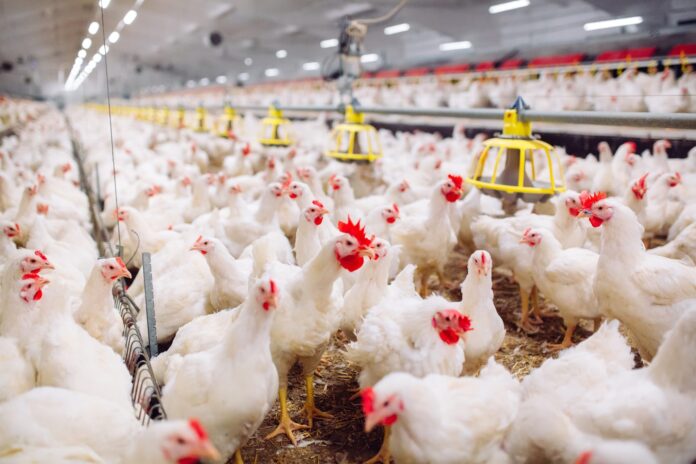AUBURN UNIVERSITY, Ala. – Poultry ranks as Alabama’s top-producing agricultural commodity. The industry continues to strive for environmental excellence each day while meeting the demand of consumers.
Advancements in Poultry Production
Through scientific research and adoption of new technologies, poultry farmers are becoming more efficient. In fact, the poultry industry employs more than 86,000 Alabama workers and processes approximately 23 million broilers each week.
Genetic selection, precise nutrition and environmental control make this feat possible. Overall, Alabama’s poultry environmental footprint has decreased by half since 1965. It takes 75 percent fewer resources today to produce the same amount of chicken meat only half a century ago.
“Each segment of the poultry industry has made improvements to reduce carbon emissions,” said Alabama Cooperative Extension System Poultry Specialist Wilmer Pacheco. “We are producing more meat, using less resources.”
Poultry Efficiency
Poultry is known as one of the most sustainable meats to produce because it requires fewer resources. Farmers can reach this goal while also emitting less carbon dioxide (CO2) compared to some other meats.
Pacheco says technology is at the forefront of poultry sustainability. The industry in Alabama, with the support of the National Poultry Technology Center, has been adopting new technologies to reduce carbon emissions. These new pieces of equipment not only provide the optimum environment to reduce bird stress but also enhance bird welfare and efficiency.
Growers use computers to control temperature, ventilation and lighting conditions. For example, most poultry farmers use new LED lights, which use approximately 80 percent less energy compared to incandescent or fluorescent bulbs. They also last longer than the older style of light bulb.
Thermal cameras are also used to identify and seal air leaks or correct insulation problems in poultry houses, allowing more energy efficiency and better environmental control.
In addition, more than 95 percent of poultry litter is recycled and reused to fertilized crops. This litter contains 30-35 percent carbon and helps recycle the carbon back to farmlands.
An Environmental Commitment
“Major poultry integrators have committed to achieve net-zero gas emissions by 2040 and 2050 across their global operations,” Pacheco said. “This promise goes hand-in-hand with poultry farmers’ conservation practices in Alabama.”
An example of these environmental practices are vegetative buffers placed around poultry houses. These zones reduce ammonia emissions and reduce potential odors from exiting the structures.
In most cases, locality of poultry facilities helps mitigate carbon output. Hatcheries, farms, feed mills and processing plants are typically less than one hour away from each other. This proximity reduces not only greenhouse gas emissions, but also the stress on birds during transportation.
Winner Winner . . .
Alabama poultry continues to become more efficient. Carbon emissions will be a part of each poultry farmer’s conversation for many years to come, ensuring healthier products and environment for all. For more information about Alabama’s poultry industry, visit the Alabama Extension website at https://www.aces.edu/.
Down to Earth: Agriculture Sustains Alabama
Alabama Extension is getting Down to Earth. Why? Because agriculture sustains Alabama. Whether your ag experience is in the grocery store, in the classroom or as your profession—Extension has a resource for you.
The Alabama Cooperative Extension is partnering with the Alabama Agribusiness Council, the Alabama Cattlemen’s Association, the Alabama Department of Agriculture and Industries, the Alabama Farmers Federation, the Alabama Poultry and Egg Association, the Alabama Forestry Commission, Sweet Grown Alabama and the Alabama Association of RC&D Councils.
Alabama Extension’s Down to Earth resources are available at www.aces.edu/go/DowntoEarth.


















